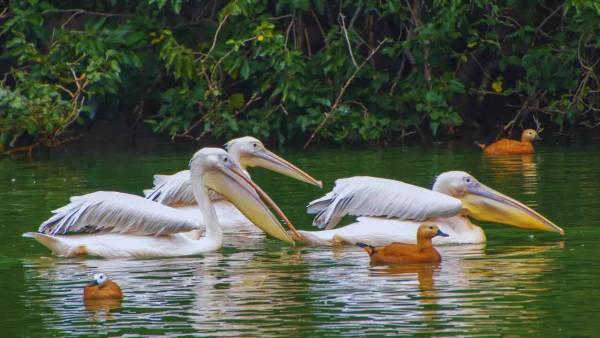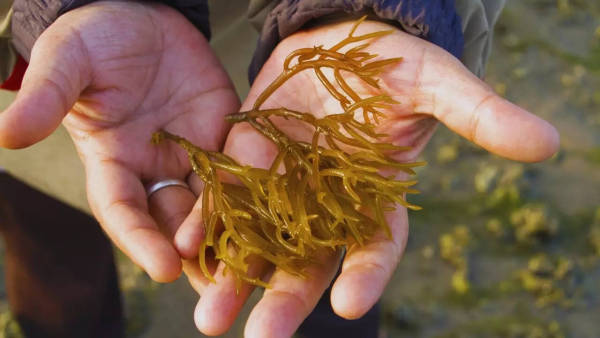When you hear the name ‘Gujarat’ what comes to mind? More often than not, it is heritage cities, colourful festivals, spicy snacks and coastal charm. But did you know that Gujarat is an exceptional destination? This might be the only place in India where wildlife adventures are possible throughout the year. From salt deserts shimmering under the sun to mangrove-lined shores teeming with marine life, the state is home to habitats that are unlike anywhere else in India. These diverse ecological zones create sanctuaries for some of the subcontinent’s rarest species, many of which exist only here. Whether you’re a birder, a big cat enthusiast, or a traveller seeking raw, untamed landscapes, Gujarat offers a wildlife experience that feels surprisingly vast and varied. Gujarat is…
Home to the world’s only wild Asiatic lionsGujarat holds a globally unique distinction, it is the only place on Earth where wild Asiatic lions still roam freely. The Gir National Park and Wildlife Sanctuary, spread across Junagadh, Gir Somnath, and Amreli districts, serves as the last stronghold of this critically important subspecies. Conservation efforts dating back to the early 20th century rescued the lions from near extinction, and today, the Greater Gir landscape supports a thriving population. Safari drives here are immersive, you’re not just spotting a big cat, but you also get to see how wildlife and local communities coexist.
 Home to the Indian wild ass and vast salt desertsFew wildlife experiences in India feel as surreal as exploring the Great Rann of Kutch, a vast expanse of shimmering white salt that stretches endlessly in every direction. This otherworldly desert becomes a refuge for several species adapted to extreme conditions. The Indian wild ass, found mainly in the Little Rann of Kutch, is one of the region’s most iconic animals and can be seen galloping across the salt flats in small herds. This is the only place where this species is found. The Rann is also home to desert foxes, chinkaras, flamingos, and migratory waterbirds in thousands.
Home to the Indian wild ass and vast salt desertsFew wildlife experiences in India feel as surreal as exploring the Great Rann of Kutch, a vast expanse of shimmering white salt that stretches endlessly in every direction. This otherworldly desert becomes a refuge for several species adapted to extreme conditions. The Indian wild ass, found mainly in the Little Rann of Kutch, is one of the region’s most iconic animals and can be seen galloping across the salt flats in small herds. This is the only place where this species is found. The Rann is also home to desert foxes, chinkaras, flamingos, and migratory waterbirds in thousands.
 One of India’s richest birding destinationsGujarat is often called a birdwatcher’s paradise, and with good reason. The state lies along the Central Asian Flyway, which brings an extraordinary movement of migratory birds each winter. Places like Nal Sarovar Bird Sanctuary, Khijadiya Wildlife Sanctuary, Velavadar National Park, and various wetlands of Kutch host flamingos, pelicans, cranes, storks, avocets, harriers, and hundreds of other species. The diversity is so striking that even casual travellers often end up turning into enthusiastic birders. Velavadar, for instance, is one of the best places in the world to see large congregations of harriers, especially the Montagu’s and pallid harriers.
One of India’s richest birding destinationsGujarat is often called a birdwatcher’s paradise, and with good reason. The state lies along the Central Asian Flyway, which brings an extraordinary movement of migratory birds each winter. Places like Nal Sarovar Bird Sanctuary, Khijadiya Wildlife Sanctuary, Velavadar National Park, and various wetlands of Kutch host flamingos, pelicans, cranes, storks, avocets, harriers, and hundreds of other species. The diversity is so striking that even casual travellers often end up turning into enthusiastic birders. Velavadar, for instance, is one of the best places in the world to see large congregations of harriers, especially the Montagu’s and pallid harriers.
 Home to India’s first marine national parkMany travellers are surprised to learn that Gujarat is home to India’s first Marine National Park, located in the Gulf of Kutch. This protected seascape is rich with coral reefs, mangroves, sea grasses, and intertidal zones that support fascinating marine life. During low tide, the area transforms into a natural aquarium, revealing starfish, sea cucumbers, octopuses, colourful algae, sponges, and even coral colonies. The mangrove forests act as nurseries for fish and crustaceans, while the offshore waters support dolphins and sea turtles. A visit to this region opens up a completely different side of wildlife travel. You can even walk through shallow tidal pools, board small boats to observe dolphins, and learn how fragile marine ecosystems are nurtured by local conservation initiatives.
Home to India’s first marine national parkMany travellers are surprised to learn that Gujarat is home to India’s first Marine National Park, located in the Gulf of Kutch. This protected seascape is rich with coral reefs, mangroves, sea grasses, and intertidal zones that support fascinating marine life. During low tide, the area transforms into a natural aquarium, revealing starfish, sea cucumbers, octopuses, colourful algae, sponges, and even coral colonies. The mangrove forests act as nurseries for fish and crustaceans, while the offshore waters support dolphins and sea turtles. A visit to this region opens up a completely different side of wildlife travel. You can even walk through shallow tidal pools, board small boats to observe dolphins, and learn how fragile marine ecosystems are nurtured by local conservation initiatives.
 Home to diverse habitats ensuring year-round adventuresOne of Gujarat’s biggest strengths as a wildlife destination is its remarkable range of ecosystems — dry deciduous forests, grasslands, wetlands, islands, mangroves, hills, and marine habitats. This diversity means that wildlife viewing is not restricted to one season. Winter brings migratory birds; summer offers excellent chances of spotting big mammals like lions; the monsoon revitalises grasslands and wetlands; and coastal regions remain active almost throughout the year. Velavadar’s blackbuck plains, Gir’s forests, Kutch’s desert, and the marine zones near Jamnagar each offer distinct, season-specific experiences.
Home to diverse habitats ensuring year-round adventuresOne of Gujarat’s biggest strengths as a wildlife destination is its remarkable range of ecosystems — dry deciduous forests, grasslands, wetlands, islands, mangroves, hills, and marine habitats. This diversity means that wildlife viewing is not restricted to one season. Winter brings migratory birds; summer offers excellent chances of spotting big mammals like lions; the monsoon revitalises grasslands and wetlands; and coastal regions remain active almost throughout the year. Velavadar’s blackbuck plains, Gir’s forests, Kutch’s desert, and the marine zones near Jamnagar each offer distinct, season-specific experiences.
Contact to : xlf550402@gmail.com
Copyright © boyuanhulian 2020 - 2023. All Right Reserved.